The Murchison NP is one of the most visited parks in the country, for the amount of fauna that you can find and also for its iconic waterfalls with the White Nile River. It is located in the west of the country, next to the border with the Democratic Republic of the Congo. It has an area of 3,893 square km, making it the largest of the parks in Uganda. The White Nile River divides the park into two areas: the northern area (where most of the wildlife is) and the southern part (where you can visit the Murchison Falls).
This park has long been on the list of the most beautiful parks in this country and also in all of East Africa for its fantastic landscapes and easy to see wildlife. Ugandans are proud of this park and say that it is one of the most beautiful they have in the country. The truth is that they are not without reason, but currently, the survival of this park is in danger.
Some time ago, and after several prospects in Lake Albert, oil pockets have been found inside the lake, making it a candy to explode. Coincidentally, at the same time as this discovery, the construction of a large and wide road that crosses the park from top to bottom by a Chinese company has begun. When we visited the park, it was still under construction, but evidently with tractors and trucks up and down, holes and piles of sand here and there, very well for the fauna and flora of the park you should not go. Environmentalists are convinced that this highway will serve to expand the oil business.
According to the explanations of the government and leaders, they say that this new highway will facilitate tourism in the area and can be a good north-south communication point of the country. Unofficial voices reaffirm that once this new communication channel is built, it will be much easier to transport oil to other countries and within Uganda. The dilemma and controversy are served.
What is certain is that the environmental impact will be brutal and this jewel of nature that the country has, making it one of the most beautiful parks, is in imminent danger.
How to get there?
The Murchison NP has different entrances, although the most used are mainly two: the Pakwach Gate (also known as Tangi Gate) that overlooks the northern part of the park and is accessed from the same town; and the Murchison Falls Gate located in the southern part and accessed from Masindi. From there it is approximately 60 kilometers to reach Paraa.
To get to Pakwach, follow the road from Karuma. It is a paved road but in very bad condition due to the number of holes that exist. In addition, a lot of trucks pass by, navigating the potholes, requiring a high dose of patience and time to get to Pakwach. We came from Gulu along a road in very good condition (Gulu-Arua road) until we reached the town of Olwiyo, which is the point where we found the Karuma road. From there, due to the state of the road and the traffic of trucks circulating towards the Congo, driving becomes very heavy.
If you are coming from Masindi, the road is in much better condition. In fact, inside the park they are building a wide and good highway to officially develop tourism when everyone knows that it is to facilitate truck traffic and thus be able to transport the oil from Lake Albert.
That is why from Masindi to the Paraa Bridge (or Murchison Falls) the road is one of the best in Uganda. From the crossing of the Paraa bridge to Pakwach, when we passed there, the road was still under construction.
There are many people from Pakwach who to avoid going through the Karuma road pass through the park (paying a small traffic fee) until they reach Masindi and from there they go to Kampala. Although it is longer, the roads are much better than the one from Karuma to Pachwak.
We also find another access gate, the Bugungu Gate, which is located in the west of the park. It is an ideal gate for those who have just enough time to leave the park as it is the closest to Paraa. In addition, the journey from Bugungu to Masindi (longer because you turn more) is very beautiful crossing the Budongo Forest and following a scenic route with views of Lake Albert and the Congo mountains.
Permits and prices
This park is also managed by the Uganda Wildlife Authority (UWA), and at the two main access gates you can make payments by credit card.
To visit the Murchison NP, the price of admission for an international tourist is 40 USD per day per person, plus 50 USD per vehicle per day if you enter with a car with foreign registration. Before, for the car issue, you had to pay 50 USD per entrance, so you could stay 3 days and only paid 50 USD. Now, since August 2021, these regulations have changed and the vehicle entrance is also charged per day. Therefore, if you visit a national park for 3 days you will have to pay a total of 150 USD for the entrance of your vehicle. On the other hand, if you travel in a Ugandan registration vehicle, the price is 30,000 UGX per vehicle per day (about 7 euros).
This entry fee includes a visit to the park and also to the Murchison Falls, one of the main tourist attractions in this area. Anyway, once you get to the falls you will only be allowed to see them from above. If you want to enjoy a good perspective of the falls as a whole, you can do the Baker Trail at a cost of 15 USD per person that you will have to pay there. This path follows the river with different viewpoints from where you can see the falls with a panoramic view.
In addition, whoever wants to enjoy the falls by boat can also do so. The starting point is the Paraa dock, next to the bridge that connects the two parts of the park; and the journey lasts around 2-3 hours where you can observe during the tour different animals such as hippos, crocodiles or elephants that come to drink water. The price is 30 USD per person and you can pay at the same dock in Paraa from where different companies depart with different schedules.
What to do in Murchison NP?
There are many and very diverse activities that you can do to visit one of the best-known parks in Uganda. Among these, we highlight:
– Go on a safari around the Buligi area and near Lake Albert
Currently with the works and the construction of the new road, this is the best area to see wildlife in the park because it is still intact. This area formed by Albert Delta, will allow you to easily see a great diversity of animals with views of Lake Albert and the Nile River. Most of the animals in the dry season are found in this area due to its proximity to the water.
You will see antelopes, zebras, elephants, giraffes, hippos… and if you are lucky, lions and leopards! We recommend that you go through the following tracks, which are the ones that we find the most beautiful: Albert Track, Queens Track and Victoria Nile Track.
We did a 4h morning safari with Aren, who works at Villakazi Lodge and we saw many animals, including lions and leopards. You can find our experience in the section of our route. If you want to contact Aren this is his phone: +256704412693.
– Visit Murchison Falls
These fantastic waterfalls, which have also been endangered by the construction of a water intake, are perhaps the most beautiful tourist attraction in the park. The local people called these falls Mpanga, which meant God or creator. In 1864, the British explorer Samuel Baker, upon discovering them, changed his name to Murchison in honor of the president of the Royal Geographical Societal, Roderick Murchison, who was the founder of the expedition. Later with the dictator Idi Amin, they changed their name again, but it did not last either.
The waterfalls are located in the southern part and can be easily reached by a completely new, paved road. You can do a small circular hike called Baker’s trail (like the explorer who supposedly discovered them) that allows you to see the two falls from different perspectives for a price of 15 USD or go just above the falls which is free.
– See the river Nile and go on a boat cruise.
Different Nile boat cruises depart from Paraa and allow you to see the center of the park. We did not do this activity because it was out of our budget, but we spoke with people who were very happy to have done it. Navigating the Nile River allows you to see the wildlife around it until you reach the foot of the Murchison Falls. The Nile River cruise costs about USD 30 per person and takes about two hours.
– See chimpanzees in a community forest near Masindi
Another tourist attraction in this area are the chimpanzees. It is said that there are about 5,000 specimens in the country. To see this fantastic animal, most tourists visit the Kibale forest where there is a population of 1,500 specimens and you can take a walk to go find them and see how they behave. The price is 100 USD per person.
Other populations of chimpanzees, however, are found in the Budongo Forest, at the Bigodi Wetland Sanctuary, and on the island of Ngamba in Lake Victoria. The prices for us were exorbitant to go see these fantastic animals.
About to discard it from our planning, we learned that near Masindi, there was a community forest where a family of 20 chimpanzees lived and it was possible to see them, for a more than economic price, 20 USD per person.
You can read more about our experience in the section: our route. If you want to contact Deo, the guide who accompanied us during this excursion, here is his phone number: +256755392210.
Where to sleep?
– Bwana Tembo Lodge: Managed by two Italian brothers, this accommodation is located in Pakwach, in the north of Murchison NP. It is one of the best accommodations in the area where you can enjoy good views over the Nile River and one of the best restaurants in Uganda. Excellent cuisine! It has different rooms with a very good value for money and sometimes elephants wander quietly through the accommodation. We spent two very good nights here. If you want to book, you can click here or contact directly to Davide at +256772957850.
– Vilakazi Lodge: This lodge is also located in the Pakwach area, near the north gate of the park. It has different types of rooms and also organizes safaris in the park with a very good value for money. We did a tour with them and we saw 3 leopards and 1 lion, among others. To be able to book, you can click here or contact directly with them at +256394801372.
– New Court View Hotel Masindi: This is the best accommodation if you want to stay in Masindi town. Located in the city center, it has different types of rooms at a very good price. Besides, it has a very good restaurant with a very complete menu. Run by Sally, an octogenarian woman of English origin, it is a place to have a very good conversation with her and also to be able to book an excursion to the Kabango community forest to see chimpanzees. If you want to book, you can contact them directly at +256752446463.
– Red Chilli Paraa: This lodge is located in the southern part of Murchison NP, right next to the River Nile and close to the falls. From there different safaris are organized in the park and it has rooms and camping options, apart from a good restaurant. To book you can click here.
Our route
DAY 1: We had arrived the day before from Kidepo, with a very difficult last stretch of road. It was paved, but with many holes. Before we prefer dirt road than that! So as we were tired, our first day in the north of Murchison NP we took the opportunity to rest and carry out various tasks such as shopping in the market, filling the diesel tank or cleaning clothes.
This town is located right on the shore of the White Nile, so we could see it in all its splendor. In addition, due to the rains, its flow had increased considerably. As it was a relaxing day, we took the opportunity to go to a lodge that had a pool to eat and take a bath, taking advantage of the fact that it was a hot day. During the trip, these rest days go super well. And if these are with a pool, perfect…
In the evening we had dinner at Tembo Lodge where we were staying. We were talking to Francesco, who owns the apartment and who has lived in Uganda for a long time. So he was able to give us a lot of advice for the rest of our adventure in Uganda. We had already charged batteries, so it was time to go to bed early because the next day we wanted to enter the Murchison NP.
DAY 2: We get up early to be the first to enter one of the most visited parks in Uganda and thus be lucky to see animals, since early in the morning is when they are most active. Our surprise was when at the entrance they told us that when entering with our car we had to pay 50 USD per day for the car, apart from our tickets. We had a little book where the price was 50 USD per ticket, regardless of the days you were there. So after arguing with them, they showed us with their mobile phone a letter that seemed official from two weeks ago in which they had changed the regulations. As of now, in Uganda the car paid 50 USD per day! With all the discussion, an hour had passed and it seemed that that boy would not let us pass if we did not pay what was due. So we decided to backtrack and enter in the afternoon to take advantage of the 24 hours to visit the animals first, and the next day the Murchison Falls.
We went to Villakazi Lodge, the first accommodation we found and it seemed like it was a place that had wifi to work for a while. There, we explained to the owner our discussion in the morning, and he offered us a solution that seemed very good: we would enter in the morning with a Ugandan safari car (paying the local vehicle tax which was around 6 euros and the diesel oil); so that morning we could also enjoy the animals.
And that’s how that morning we returned to the access door where the same boy was, but we entered with Aren, our driver-guide, and a Ugandan car. The Murchison NP is a park with a large number of animals but they are more and more concentrated, since they are making a giant asphalt road because of the truck traffic because they have found oil in Lake Albert. This makes the park limited to only one area, spoiling its entire environment. We went through different paths that were in the north and near the water and we were very lucky to see 3 leopards and 1 lioness that was sleeping in the middle of the grasses but that got up when we passed there and went under another tree where it was already impossible to visualize it. The park was full of groups of herbivores, a curious landscape with palm trees, and beautiful views.
After two hours in the park we went out again and, later, we entered with our car with a single 24-hour ticket that forced us to leave the next day around noon. We took advantage of the fact that it was the hour of maximum heat to visit the Murchison Falls, which are located to the south of the park.
The paved road in this section was already built, being one of the best roads in Uganda that we have driven on. In principle, the maximum speed in the park was 40 km/h, but with that road it was impossible to go at that speed! We reached the waterfalls where we ate, and enjoyed some great waterfalls that were even wilder due to the rains that had fallen in recent weeks. There, we met a very pretty Ugandan family who wanted to take some photos with us and we were able to enjoy it from the top of the falls.
Anyway, there was a path that took you to see the waterfalls from below in a perspective that allowed you to visualize the whole set, since there was another fall that was hidden and that you could not see from the top. The problem is that this had a cost of 15 USD. And, as good Catalans, we considered it expensive… So while Laia stayed at the top of the waterfall, Esteve disappeared down a path and ran until he found this beautiful perspective of the waterfalls. A very different and very beautiful image of the whole of the Murchison Falls. On the way back, a guard was in the middle of the road looking for coverage with his mobile phone, but Esteve, pretending to be nice and with good words, managed to get back to where Laia was. One of the most beautiful waterfalls in Africa, and more during the rainy season.
In the afternoon, at the golden hour for photographs, we returned to the part of the park where all the animals were. There we were able to see giraffes, zebras and elephants while we watched the sunset. That day we slept in the Red Chili Paraa, located inside the park.
DAY 3: We got up early to go back to the area where the day before we had seen the leopards and the lioness with Aren. That day, unfortunately, we were unlucky. Everybody was looking for these animals and they couldn’t find them … that means that we had been very lucky!
The hours of our entrance were already ending, so it was time to say goodbye to Murchison NP, a park with impressive waterfalls and an increasingly reduced fauna due to the construction of this highly conflictive road. We proceeded to Masindi, where we would stay at Sally’s home at the New Court View Hotel. This woman of English origin who was already over eighty told us many anecdotes about her life that had passed mainly in Africa. As it was raining and Esteve was not feeling very well on his stomach, we rested the rest of the day at this Masindi’s hotel.
DAY 4: Today we would do a special activity: a visit to the forest chimpanzees in the Kabango area. We met at an intermediate point with Deo, our guide, who led us through sugar canes to the entrance of a forest. There we began to walk in silence until, after a while, we observed different chimpanzees among the trees. Some were about to sleep and had already built their own nest to stretch out, others were eating, others were accidentally throwing branches and others were jumping from branch to branch… It was the first time we saw these animals in Africa in a forest community and, although we saw them from afar, the experience was well worth it. In addition, we pay about 10 euros per person, while in other areas of Uganda the prices go up to 100 euros per person.
After this visit to the chimpanzees, we continue driving south towards Fort Portal, our next destination on our trip to Uganda (if you want to know more about the Kasenda lakes and the Fort Portal area, you can click here).


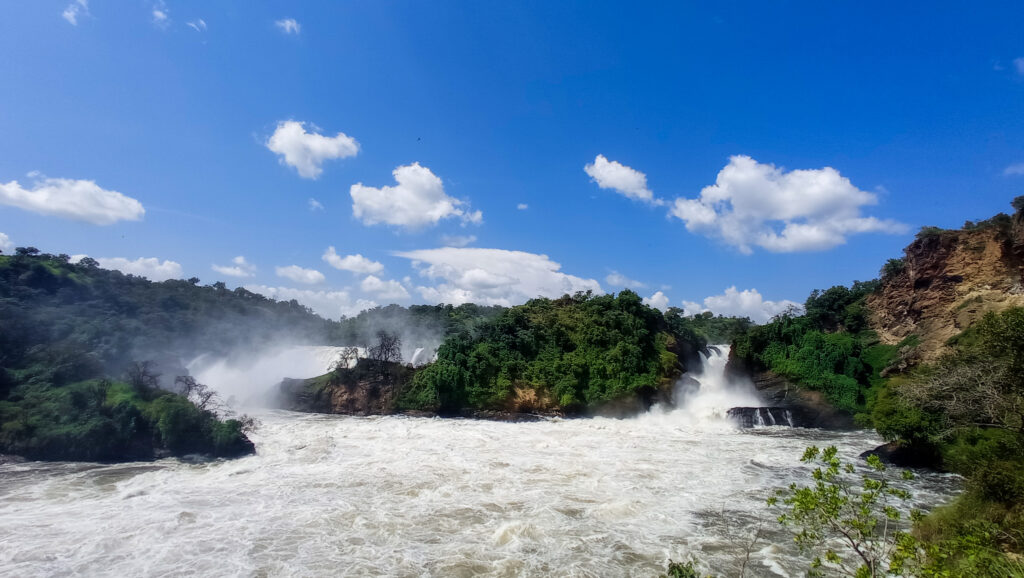

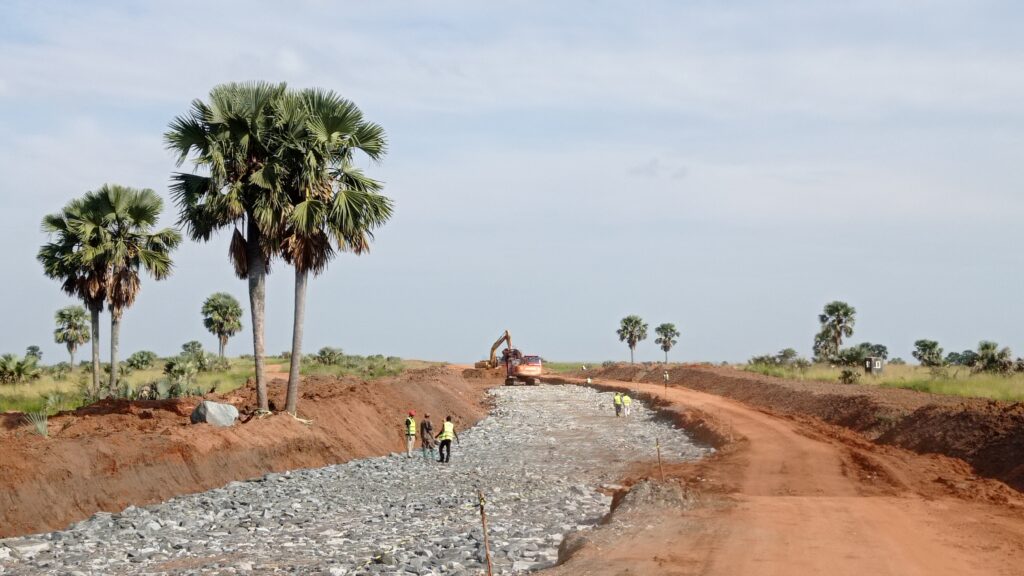
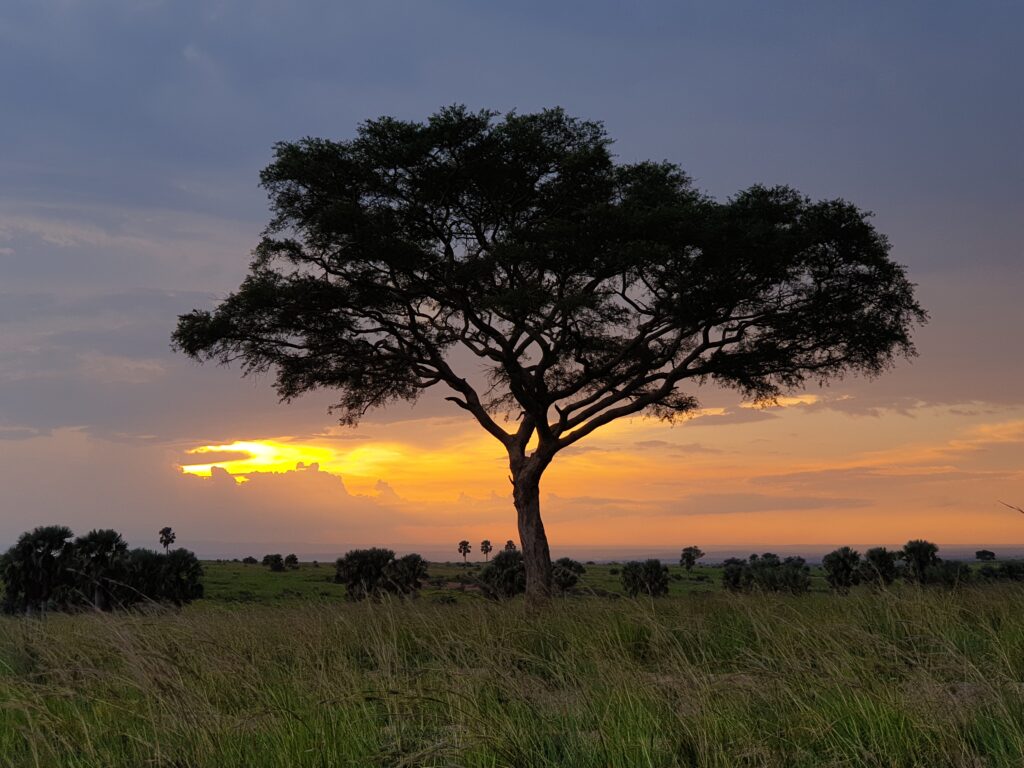
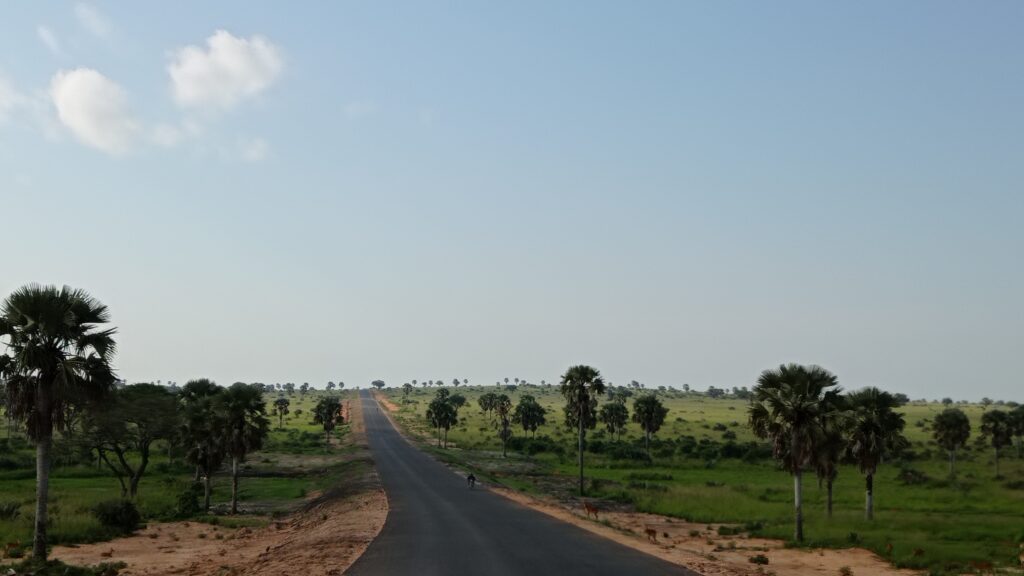

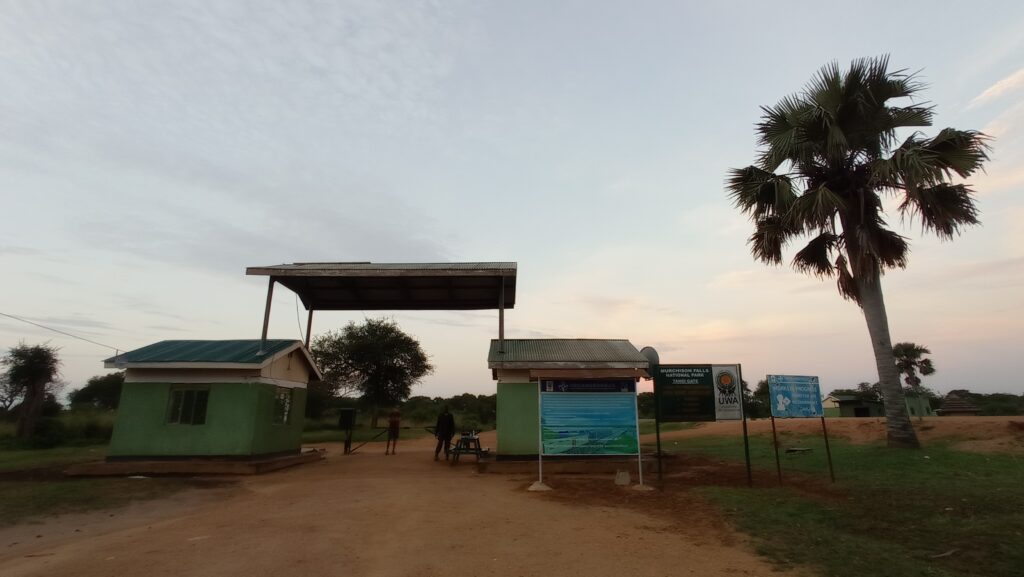
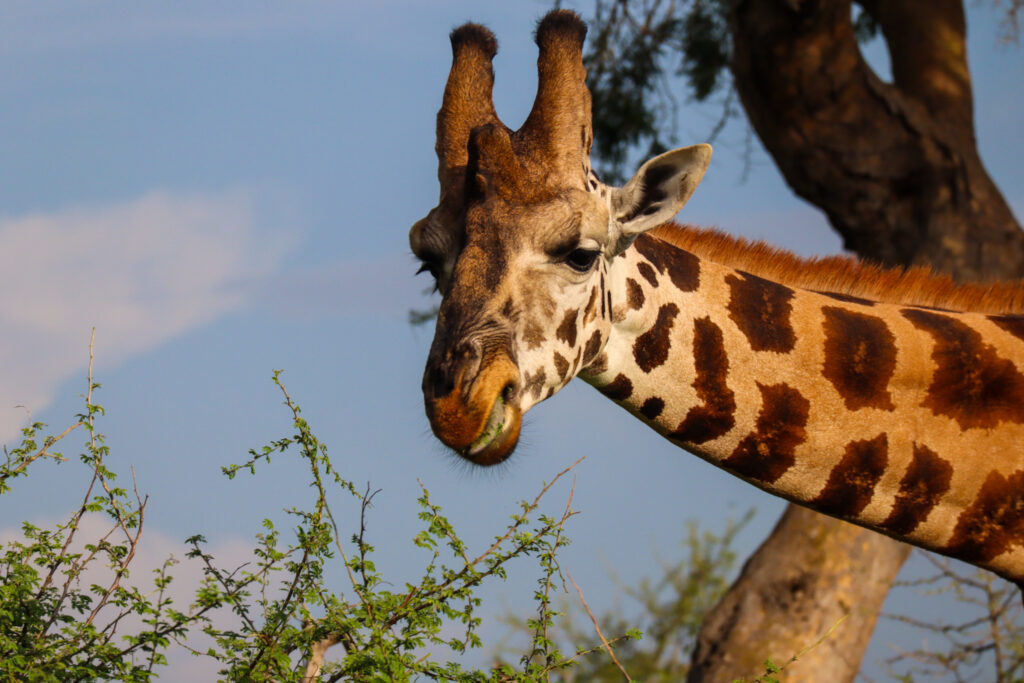
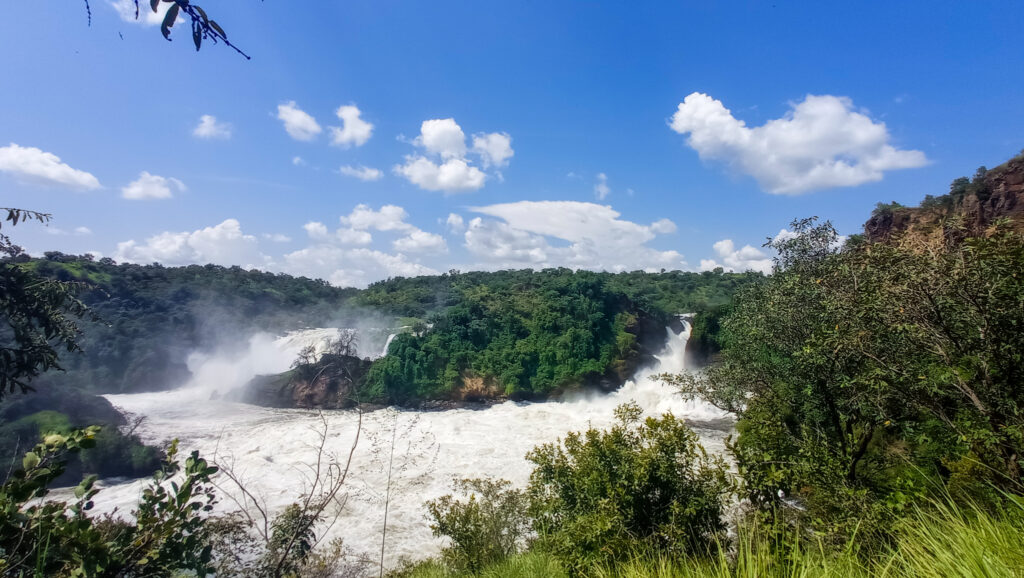

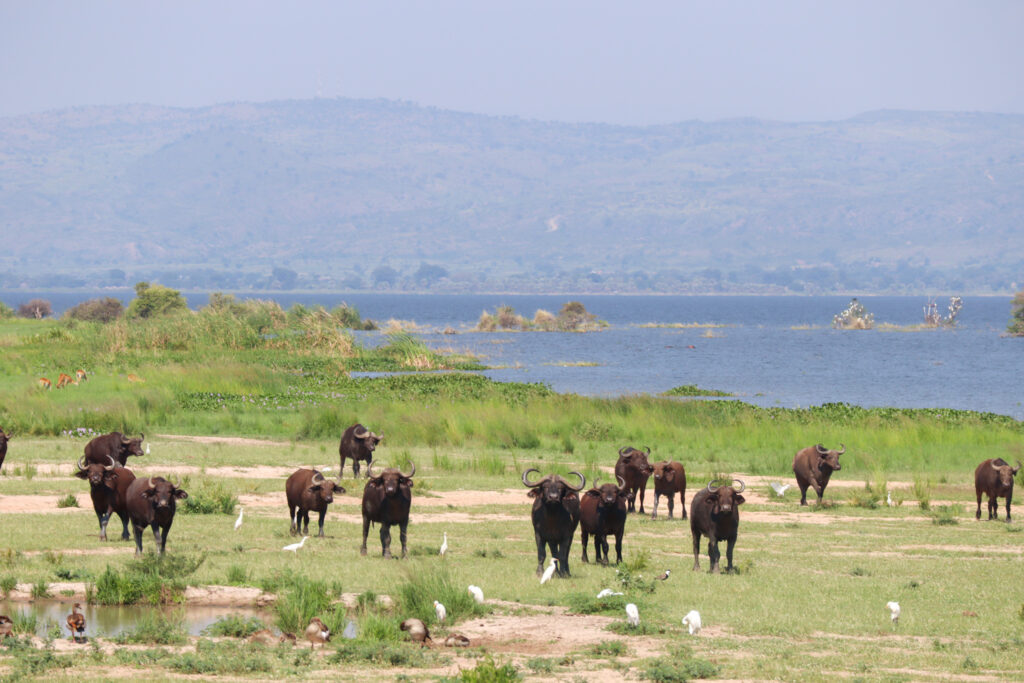
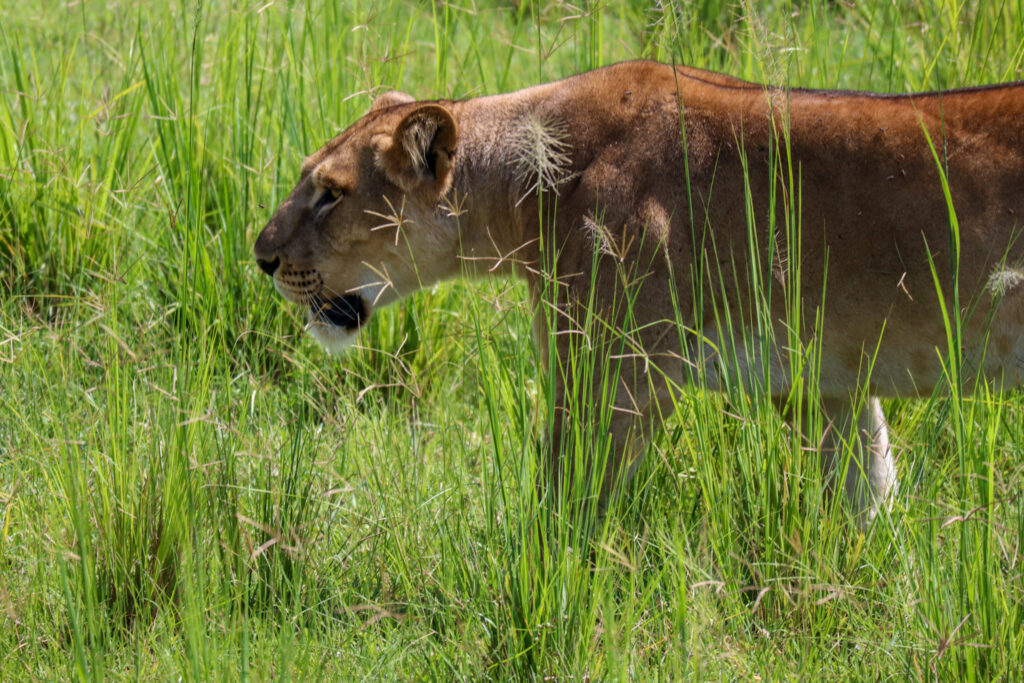
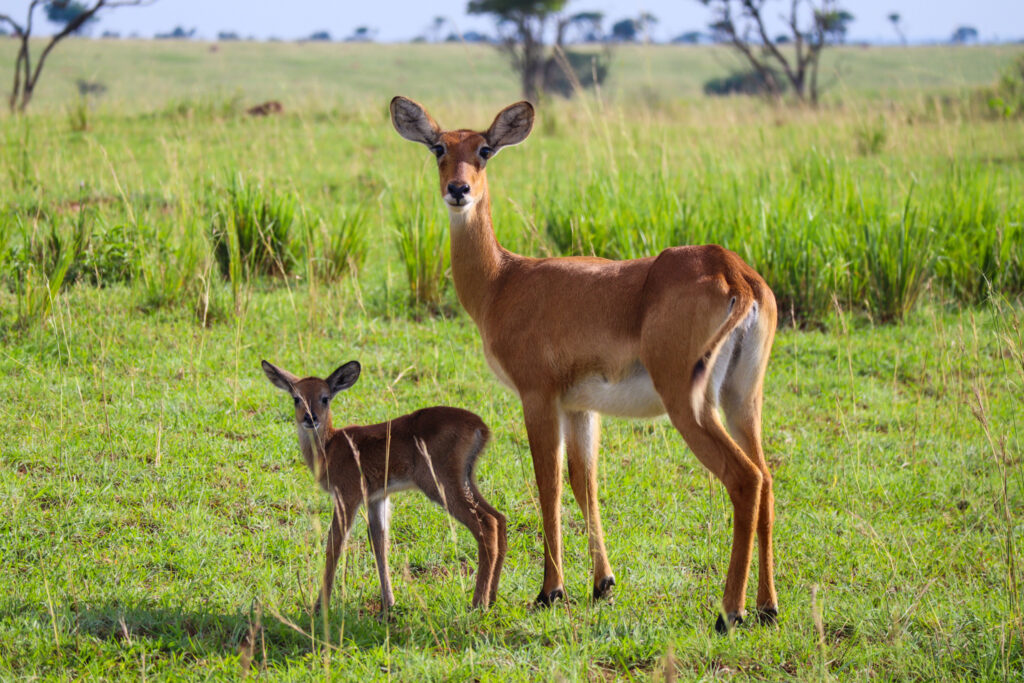
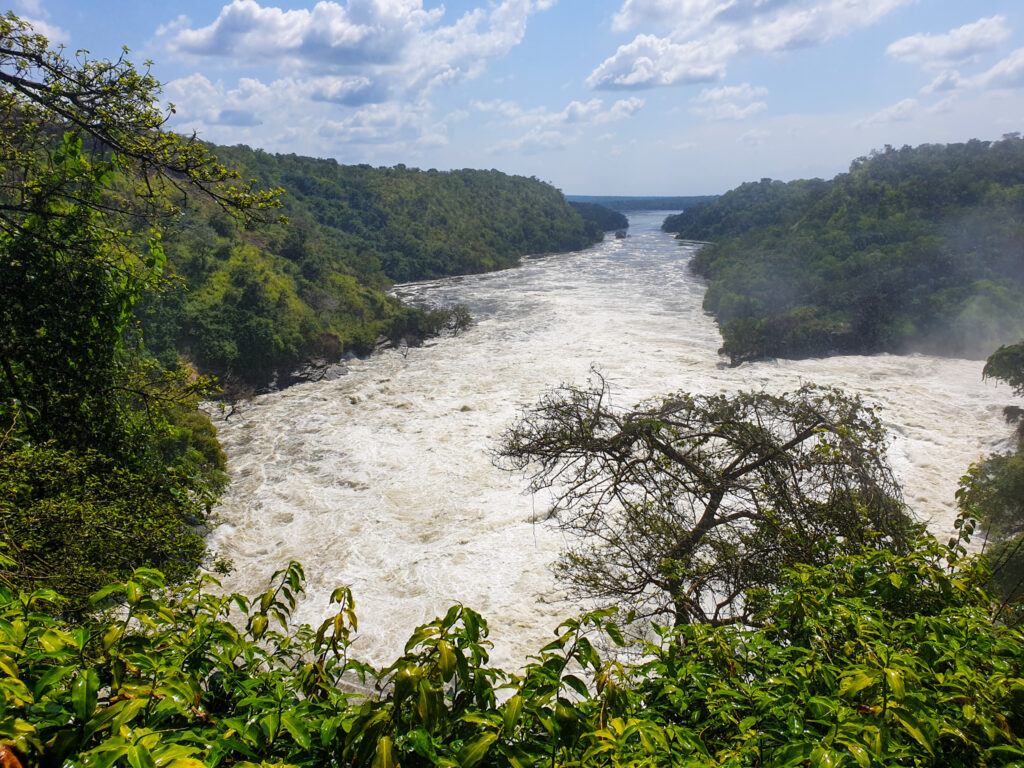
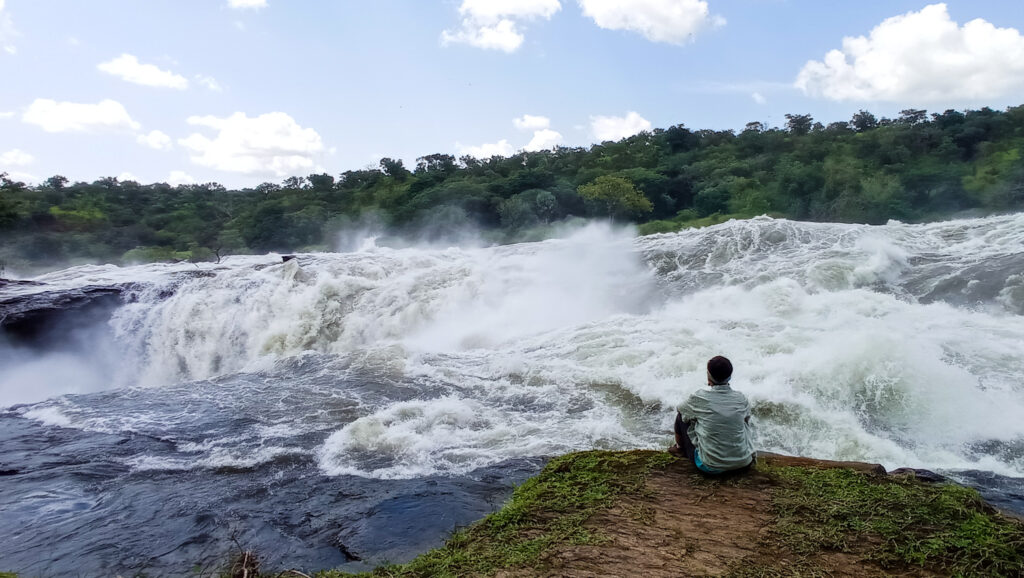
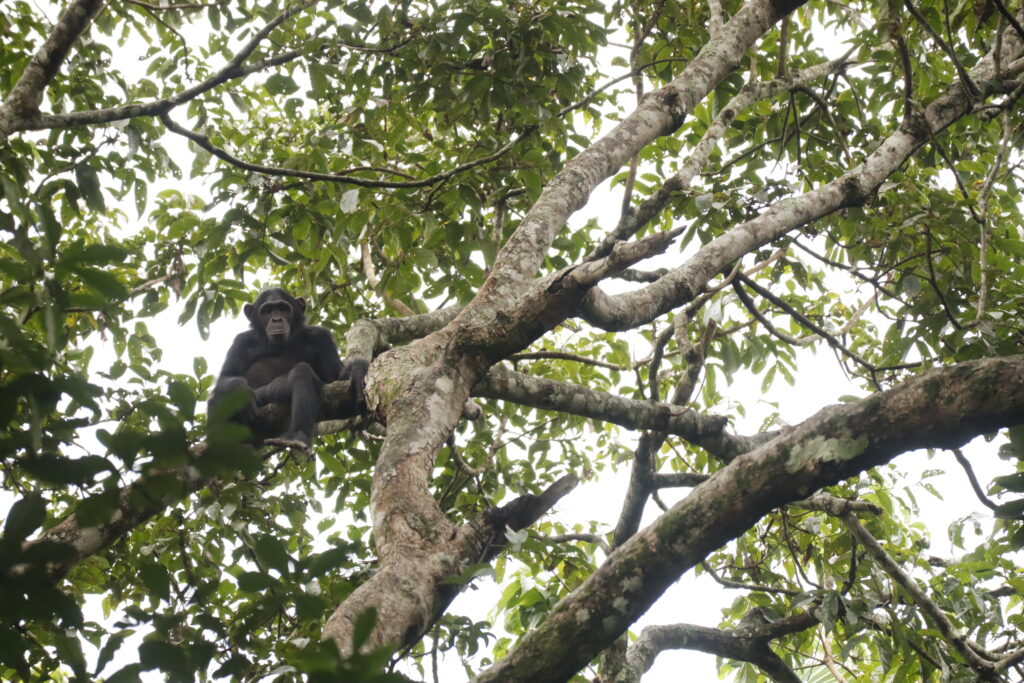



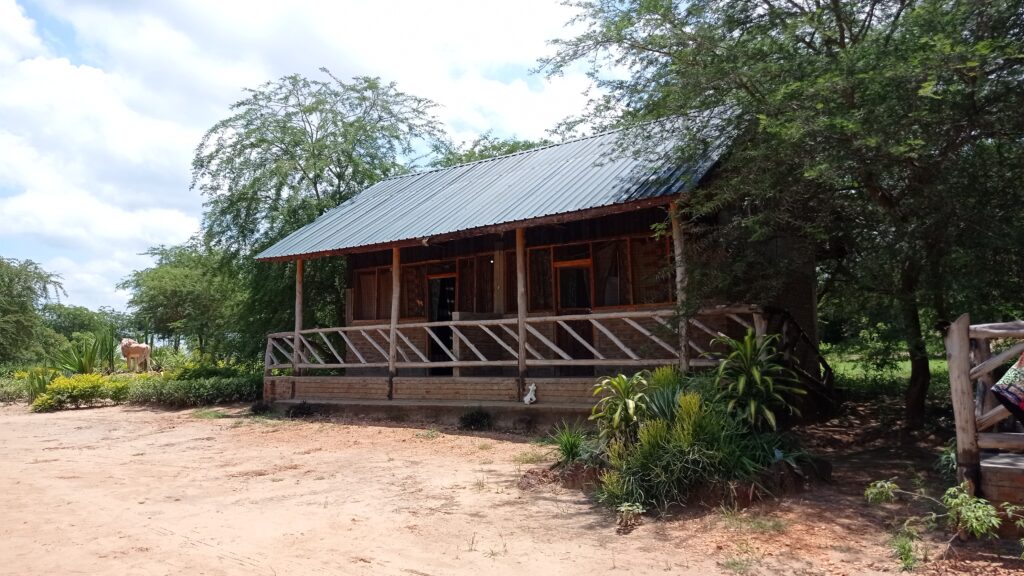

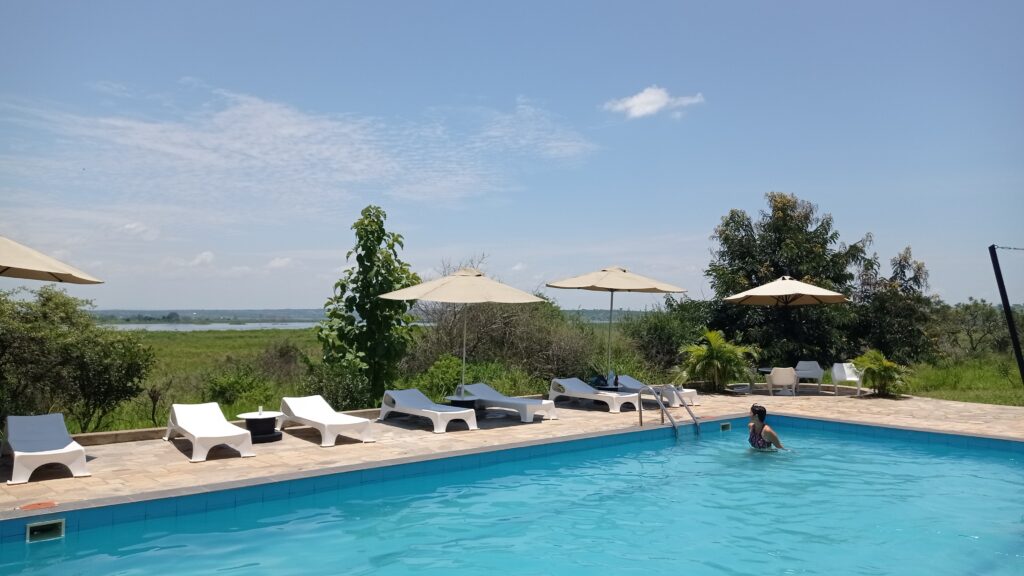



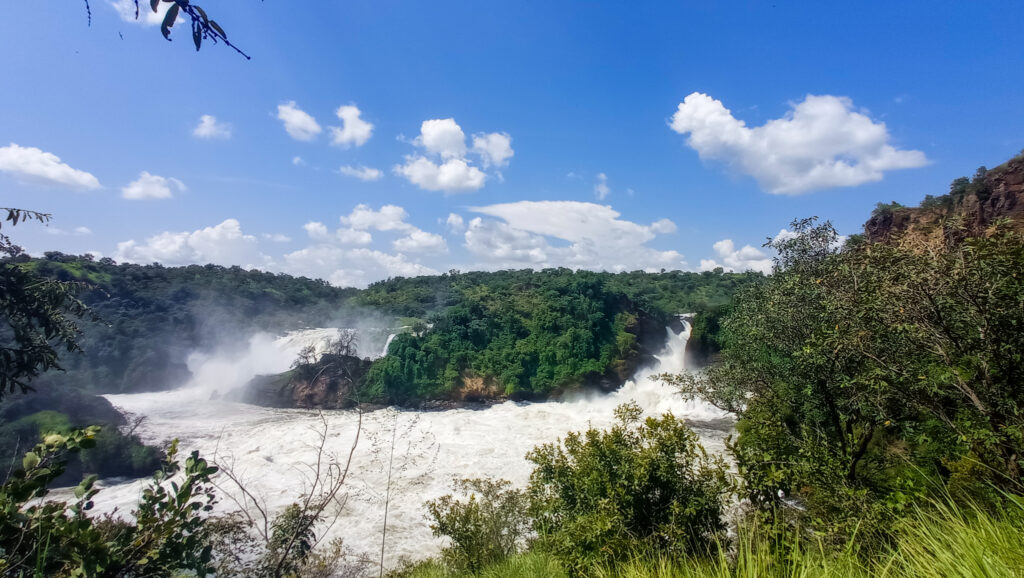
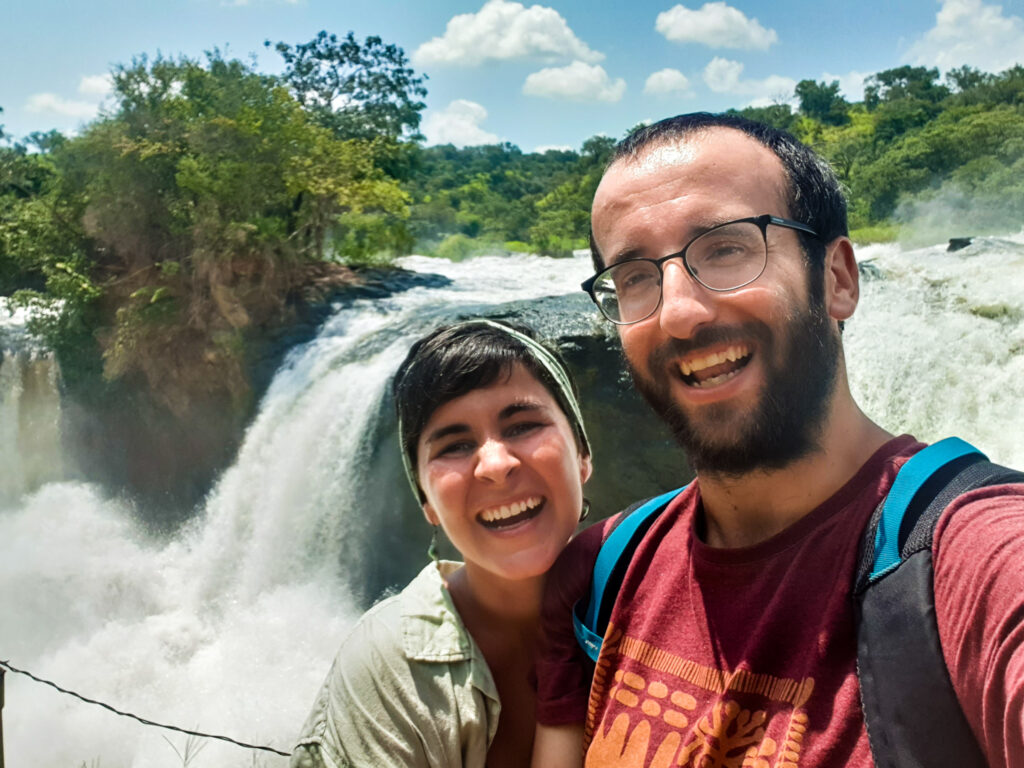
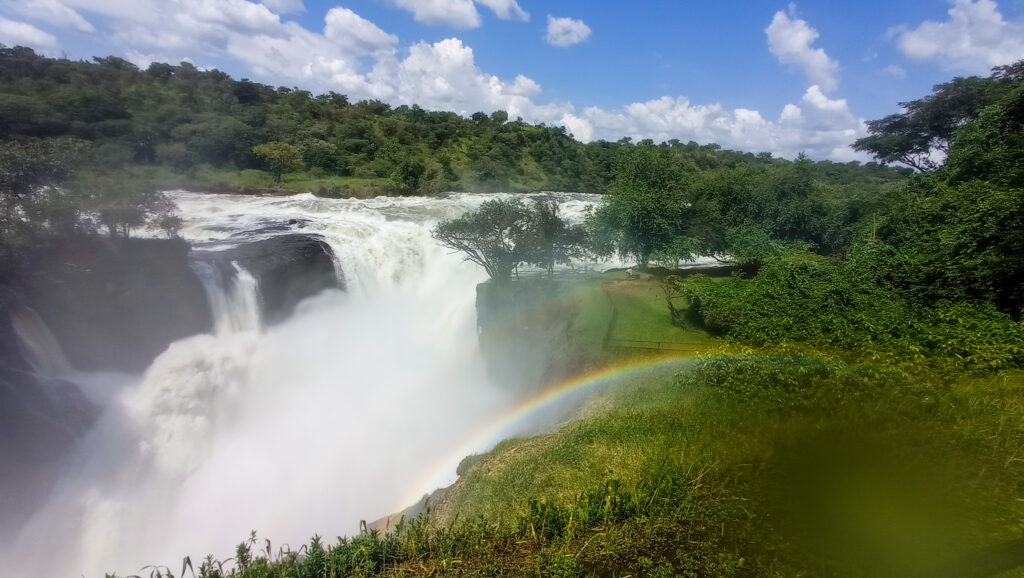
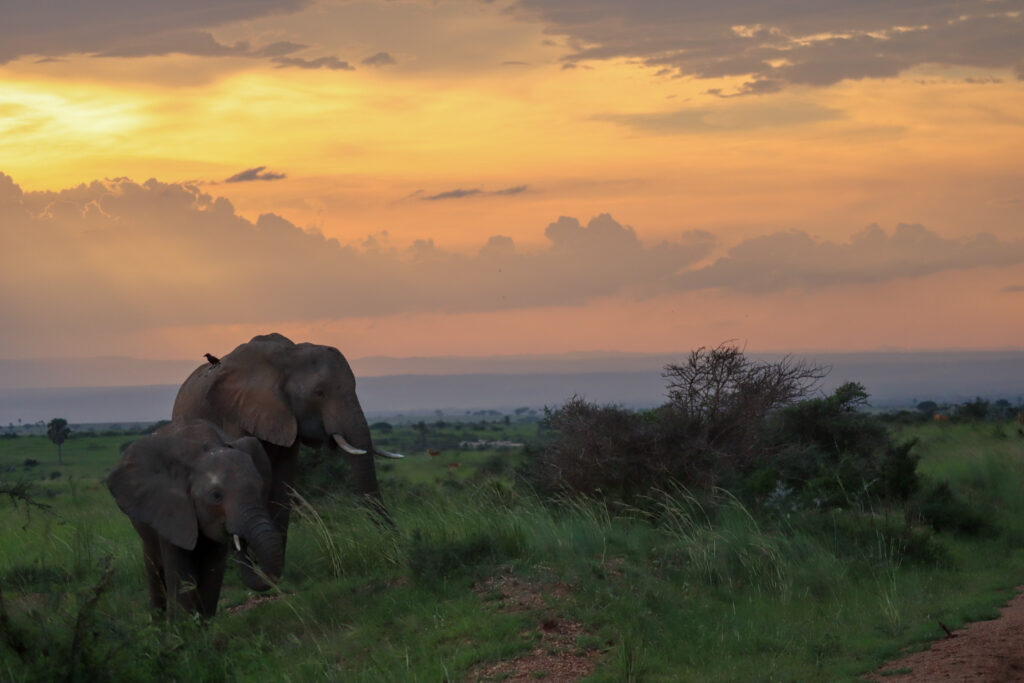

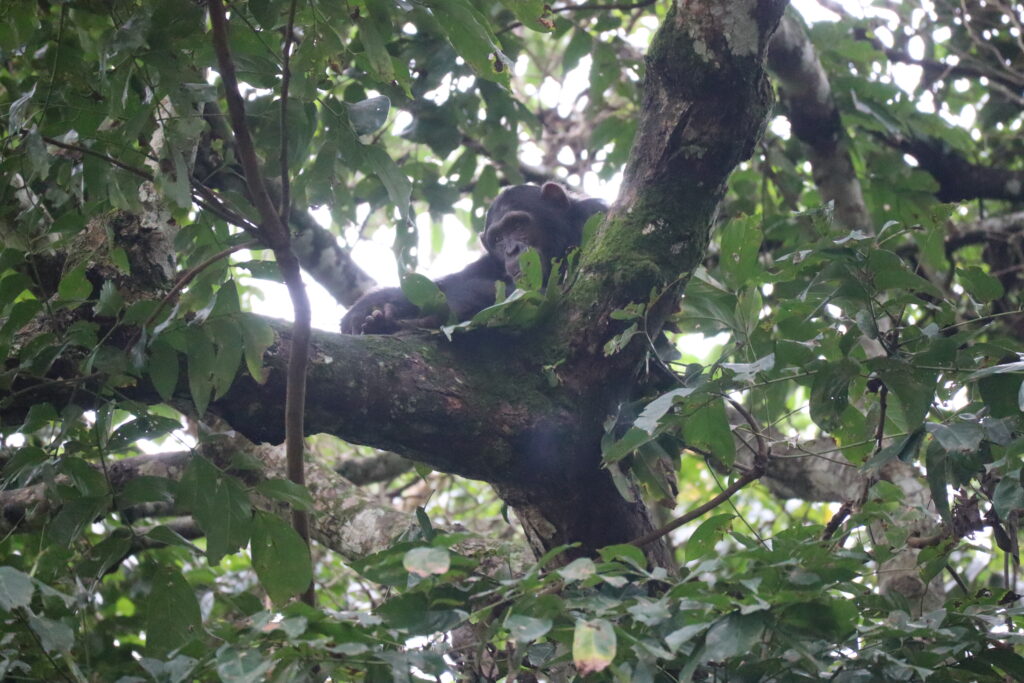
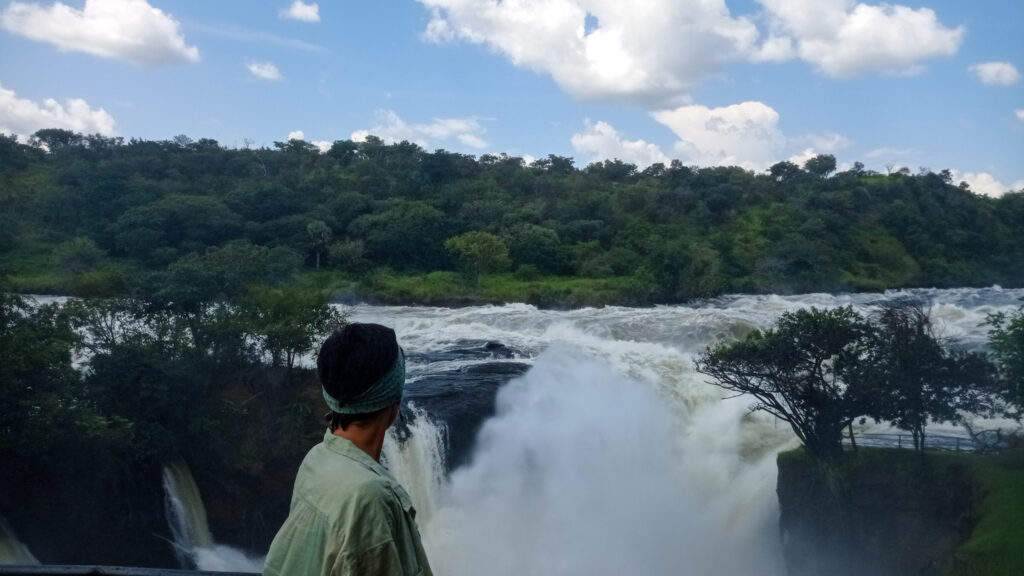
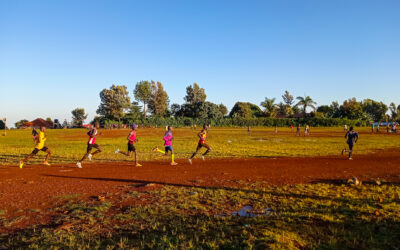

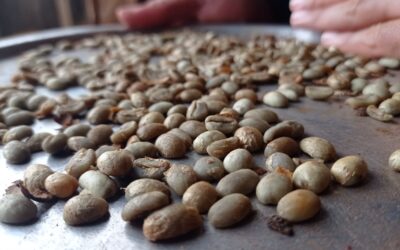
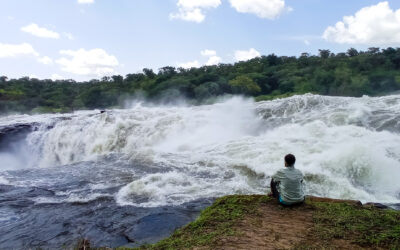
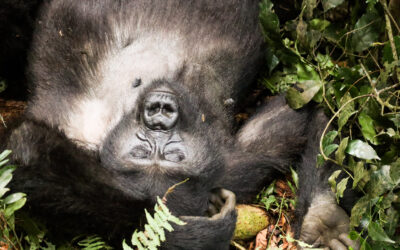
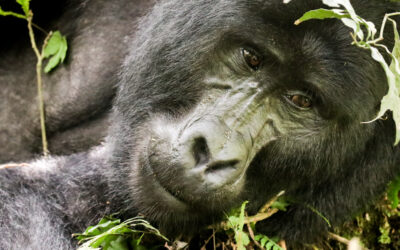
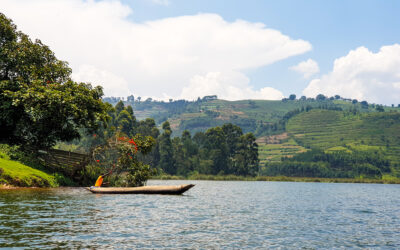


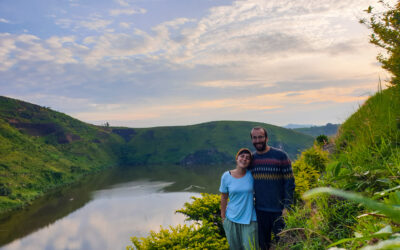
0 Comments